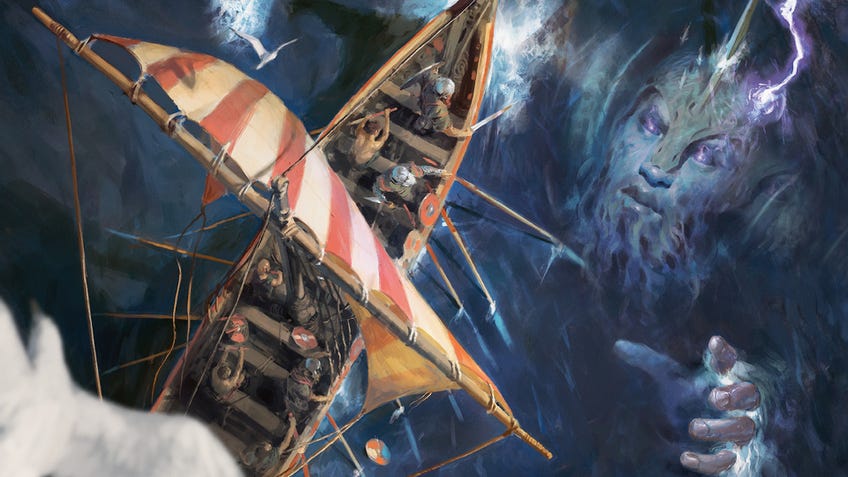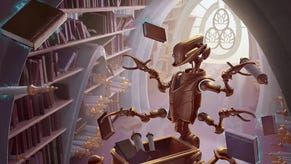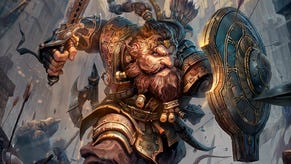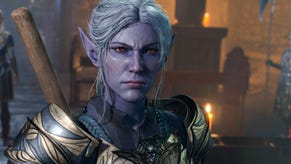The basics of Dungeons & Dragons: Everything you need to know
Where to get started with the fantasy roleplaying game.
You’ve sorted out your roleplaying headspace by reading our guide to how to get started with Dungeons & Dragons as a player, learnt what to buy if you want to play Dungeons & Dragons and how to start a Dungeons and Dragons roleplaying group.
But what do you actually do when you play Dungeons & Dragons?
The basics of D&D are you roll a die or multiple dice whenever you perform an action or respond to events in-game. Which isn’t really news to you. So let’s dive into this a wee bit further.
How long does Dungeons & Dragons take to play?
A single session of Dungeons & Dragons can last anywhere between three hours to an entire day, as it’s almost implausible to get a reasonable amount of roleplaying done in less than a few hours. If you’re playing a one-shot, then you can expect things to be wrapped up in a single session. Whereas an ongoing campaign will carry-on over multiple sessions and, depending on the broadness of the story (whether it comes from an official D&D campaign book or from the DM’s own mind) and how often you decide to play, can last several years.
Whether you want to commit to a long-term campaign or just stick to one-shots, is really down to how much time you think you can commit to playing D&D right away. It’s generally advisable to give your toes a little dip before taking the full three-year long campaign dunk, but anticipate having to free up some time either way.
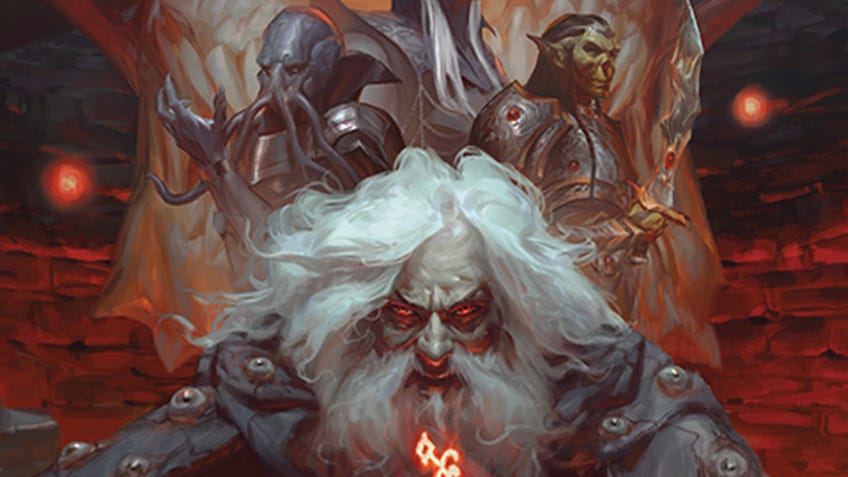
How many players do you need to play D&D?
Unlike most tabletop games, D&D doesn’t have a limit on the number of players you can have in a single group. This kind of decision really comes down to the individual discretion of the DM and the players, as striking a nice balance of players makes for a better experience for everyone involved.
Having too many players can result in an absolute mess where the DM can’t get a single word in edgewise, but not having enough can leave the party dynamic feeling severely lacking. As a rule-of-thumb, the best D&D parties tend to consist of around four to six players, plus the DM. This gives people enough to work with, whilst preventing the aforementioned roleplaying chaos.
What do I need to play Dungeons & Dragons?
To play a very basic game of Dungeons & Dungeons, you’ll need…
- A copy of the Dungeons & Dragons: 5th Edition rulebook
- One set of polyhedral dice (d4, d6, d8, d10, d12, d20)
- One D&D character sheet
- A pencil
This just about covers what is required to play D&D, but of course, you can choose to get more stuff than just this. You might especially consider getting a spell-sheet if you’re playing a character that uses a lot of spells, or a copy of the 5th edition player's handbook, want to have a more detailed guide to playing D&D.
If you want more information, we actually dive into the ins and outs of Dungeons and Dragons purchases in our guide to ‘What to buy if you want to play Dungeons & Dragons 5E’, so go have a read of that.
When do I roll the dice?
When performing general actions players will have to roll an ability check in order to succeed at the action.
For example, your character is at a party and, let’s say, they’re attempting to persuade someone that the handful of cold cigarette butts they’re holding is actually a pile of delicious Skittles. Your base roll (which will be performed with a d20 – a 20-sided die) will be either increased or decreased depending on your ability modifier and proficiencies.
Ability modifiers and proficiencies: the basics
Wait, what’s an ability modifier? Well, it’s determined by your ability scores (strength, dexterity, constitution, intelligence, wisdom and charisma), which will be set when you create your character, a process we happen to cover in our own guide to Dungeons & Dragons character creation.
Each ability score gives you a usable modifier to apply when rolling for an ability check (for example, a 12-13 ability score will give you a +1).
And what’s a proficiency? These are bonuses that are applied when rolling for specific skills, and are once again determined by character creation.
Where does the dungeon master fit into all this?
So, here’s the lowdown. The dungeon master – commonly called the DM – will either ask you to roll for a general ability, such as charisma, or for a specific skill. In the case of the above example, the DM would likely ask you to roll a persuasion check in order to convince your victim that they would want to chow-down on some ashy brown sticks. This would involve you rolling a d20 and adding your persuasion proficiency bonus (if you’re proficient in it), or your ability modifier (if you’re not proficient in it).
Attempting to bamboozle anyone into thinking that literal trash is actually a collection of yummy sweeties is no easy feat, however, regardless of their intelligence. So, not only will the difficulty level of this particular action be high (this is a number determined by the DM, which you will have to beat in order to succeed), the DM will likely ask you to roll disadvantage, which means rolling the d20 twice and using the lower result. If by some miracle you manage to pass the ability check, then well done! That sucker is diving headfirst into your sooty, dirty palms. If not, then I’m afraid you’ve got some ‘splaining to do.
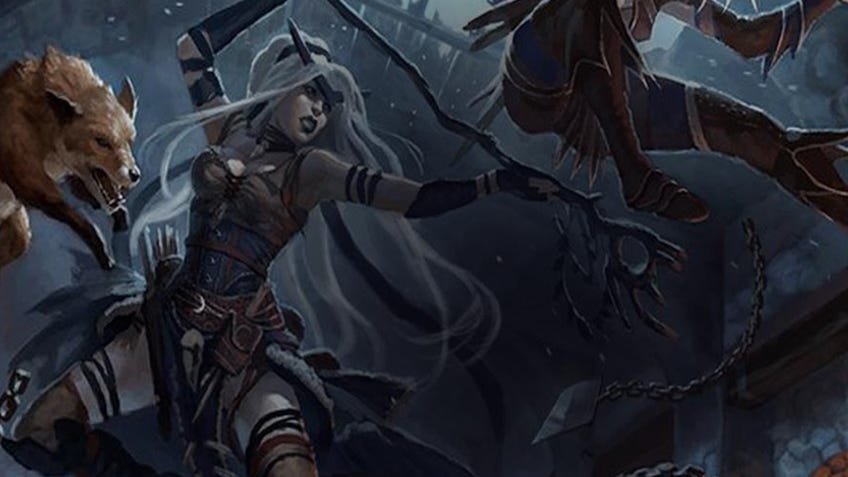
How saving throws work in D&D
Certain actions can automatically succeed if you have a have a high enough score in a passive ability. For example, if you have a high enough passive perception, you might be able to spot the incredibly squat goblin reaching their hand up to nab a couple of loose cigarettes dangling from your palms. If not, then you’ll wonder why your little horde of gritty treasure suddenly feels a tad lighter.
But you’re also entirely open to having ability checks used against you by the DM, which may result in you having to roll what’s known as a saving throw. These also come up when enemies use certain spells. The saving throw you’ll use depends on what the other person is trying to do to you. For example, if someone spotted your cigarette shenanigans and weren’t impressed, they might attempt to throw a vol-au-vents at you, which you could then attempt to side-step by rolling a dexterity saving throw.
Contests, combat and initiative
Sometimes you’ll have to directly compete against another character in order to successfully perform an action. These are called contests and you’ll have to roll against another character’s ability check to succeed them.
For example, if you happened to have caught that squat goblin’s greasy little hand reaching up to steal from said cigarette horde, then you could try to trip them up. This would require you to possibly roll a slight-of-hand check in order to catch that gobbo off-guard. But they, in turn, might spot you and roll a dexterity check to jump out of the path of your incoming foot. Whomever achieves the highest score wins the bout.
Combat encounters are perhaps one of the most straightforward parts of D&D, because they usually follow a pattern that will continuously cycle the entire time.
If, for example, you did manage to trip that goblin flat on their face, they might get understandably miffed-off and decide to outright attack you. This is where the DM would likely ask you to roll for initiative, which essentially determines who goes first in the combat. Your initiative is a d20 plus your dexterity modifier. Once this has been decided for all participating characters, including enemies, the action happens. If the goblin had a higher initiative they might attempt to skewer you with a cocktail stick. This would have the DM rolling for their attack against your armour class, or AC, a number that’s determined during character creation (find out how to do it in our character creation guide!)
If they manage to roll over your armour class, then that goblin successfully hits you, which the DM would then roll the damage for. They might then decide to move away from you, before using a bonus action to blow a particularly filthy raspberry. Your turn would happen in much the same way, with an action (like an attack), a move and a bonus action. Of course, this might change depending on the circumstances, but most combat rounds resemble this basic structure, which will continue until combat is broken. For example, the goblin might decide that its life isn’t worth a few used cigarettes and chooses to yeet themself out the nearest window, leaving you victorious.
These really are the basic principles of playing Dungeons & Dragons, and getting your head around them will make your first few sessions run a lot smoother. D&D gets less complicated when you break it down into digestible chunks that will inevitably cycle in and out during a session, allowing you to focus more on the fun of it all.
To help you on your way to starting a campaign here’s how you can get through the nitty gritty parts of Dungeons & Dragons character creation.
